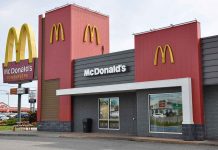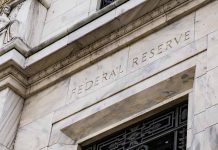
College closures are on the rise as enrollment plummets, leaving institutions and students in a precarious position.
At a Glance
- College and university enrollment has fallen by 15% from 2010 to 2021
- Up to 80 additional colleges may be forced to shut down if enrollment trends continue
- Small private liberal arts schools are particularly vulnerable to closure
- Vocational schools are seeing increased enrollment, up 16% in 2023
- Demographic shifts predict further drops in college-age students
The Growing Crisis in Higher Education
America’s higher education landscape is undergoing a significant transformation. Recent data reveals a troubling trend: college closures are surging amid financial strain and demographic shifts. The Federal Reserve Bank of Philadelphia has sounded the alarm, warning that if current trends persist, up to 80 additional colleges may be forced to shut their doors in the coming years.
The root of this crisis lies in the stark decline in college enrollment. From 2010 to 2021, total college and university enrollment plummeted by 15%. This downward spiral has only accelerated, with freshman enrollment hitting its lowest point since the COVID-19 pandemic, dropping by over 5% in recent years.
New @nberpubs: "Predicting College Closures and Financial Distress" https://t.co/dISp3VPFfF
"enrollment challenges resulting from an impending demographic cliff are likely to significantly increase annual college closures for reasonable scenarios" pic.twitter.com/YmYTL0xHGL— Scott Lincicome (@scottlincicome) December 2, 2024
Factors Driving the Decline
Several factors contribute to this alarming trend. Demographic shifts play a significant role, with projections indicating a decline in the number of high school graduates in the coming years. This demographic drop-off is expected to further exacerbate enrollment challenges for colleges and universities.
“There was a steeper decline during COVID, and most people think we aren’t going back to those levels for a range of reasons. We’ve got a demographic decline in most parts of the country and the so-called ‘demographic cliff’ coming up in the next couple of years where we’re going to see an even steeper drop in the number of 18- to 22-year-olds. The percentage of recent high school graduates who decide to go to any college has also been declining,” said David Attis, the managing director of research at consulting firm EAB.
Additionally, the value of higher education is under increased scrutiny. Many potential students are questioning whether the cost of a college degree is worth the investment, especially in light of rising tuition fees and student debt burdens. This shift in perspective has led some to explore alternative educational paths, such as vocational training.
Vocational schools are experiencing a surge in popularity. In 2023, enrollment in vocational schools increased by 16%, with a notable 23% rise in students training to become construction workers. This trend suggests a growing preference for practical, skill-based education that leads directly to employment opportunities.
The Impact on Institutions
The consequences of these enrollment declines are far-reaching. Many colleges, particularly small private liberal arts schools, rely heavily on tuition revenue. As student numbers dwindle, these institutions face increased financial strain, often leading to difficult decisions about program cuts, mergers, or even closure.
When colleges are forced to close, the impact extends beyond the campus. These institutions are often major employers in their communities, and their closure can have significant economic repercussions for local areas. Furthermore, students enrolled in these colleges face disruption to their education and may struggle to complete their degrees elsewhere.
Looking Ahead
As the higher education sector grapples with these challenges, institutions are exploring various strategies to adapt and survive. Some are considering mergers or partnerships to pool resources and reduce costs. Others are reevaluating their program offerings, focusing on areas of high demand and potential growth.
For students and parents, it’s crucial to carefully consider college choices, taking into account an institution’s financial stability and long-term viability. As the landscape of higher education continues to evolve, flexibility and adaptability will be key for both institutions and students navigating this uncertain terrain.






















